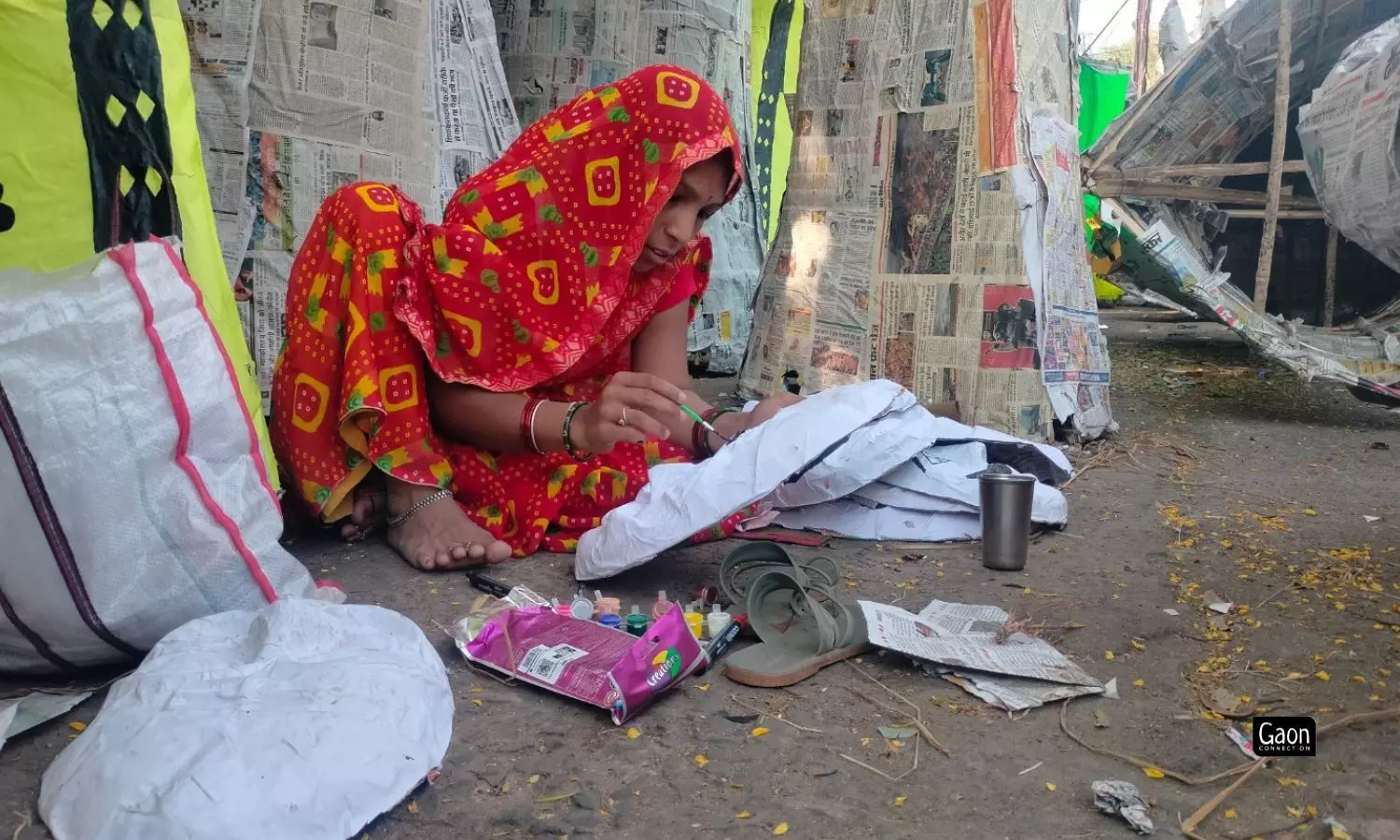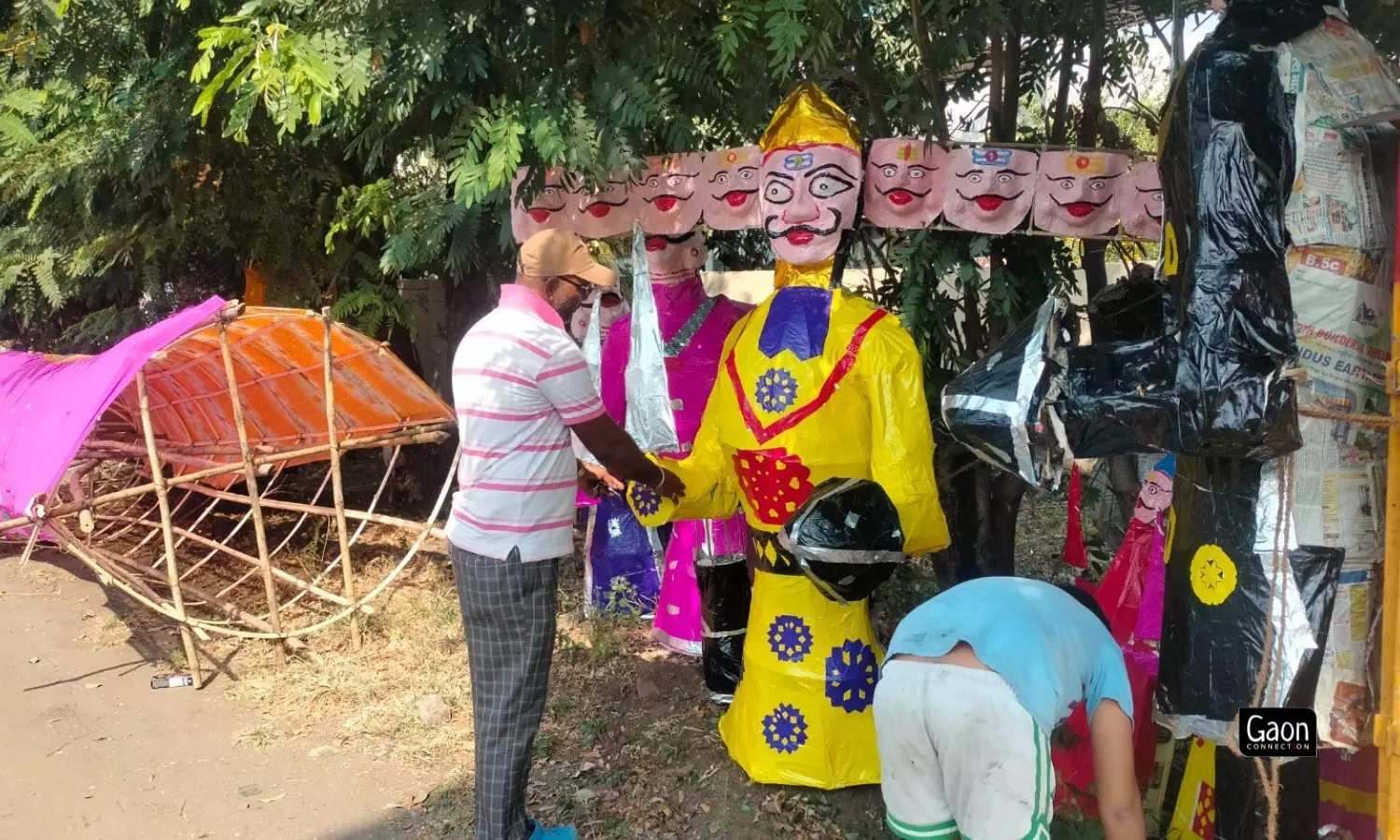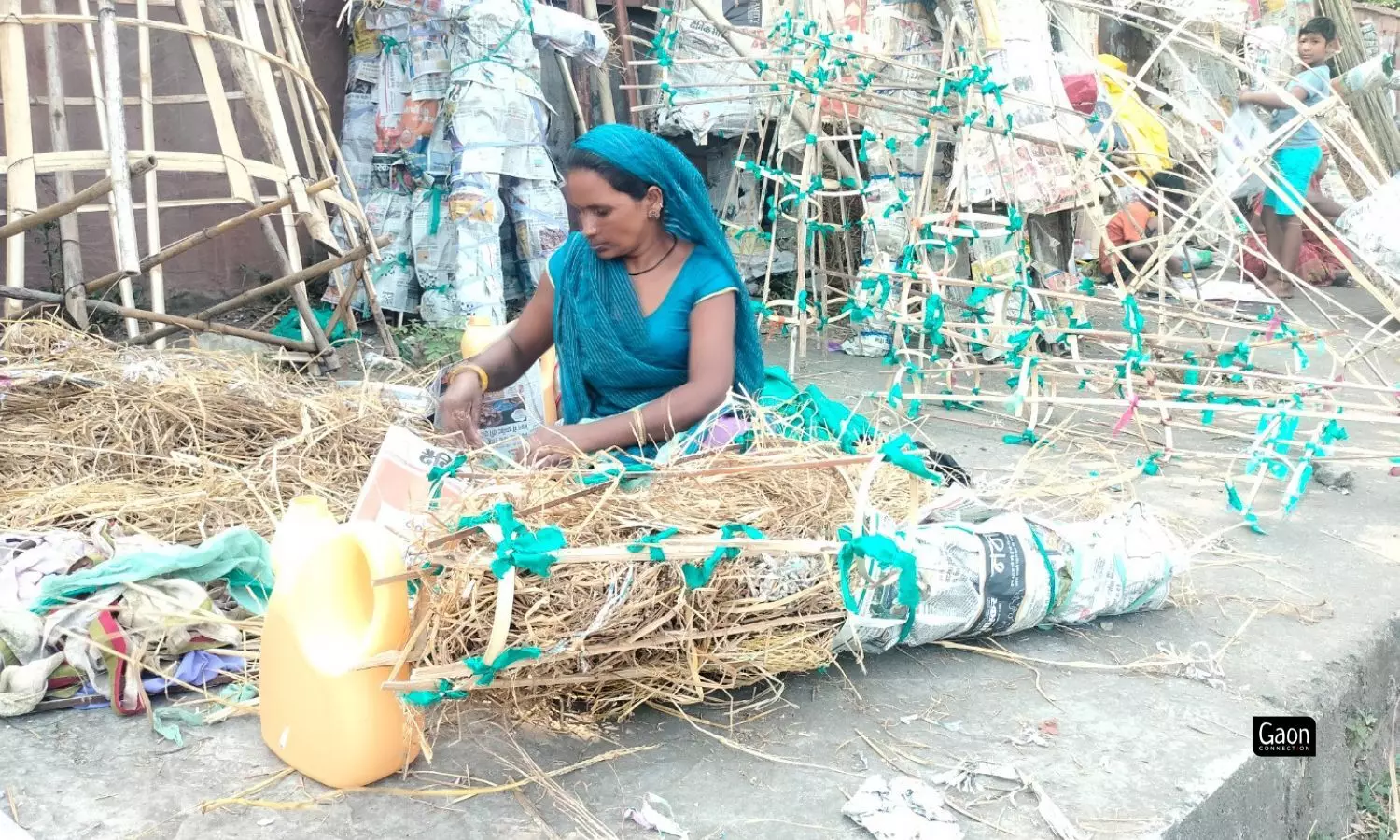Bhopal, Madhya Pradesh
October spills over with the spirit of Dussehra, but for hundreds of families from the Basor community in Bhopal, the preparations for the festival began way back in August.
This community has traditionally been making effigies of Ravana which are burnt on Dussehra (also known as Vijay Dashmi) to mark triumph of good over evil. This year the festival falls on October 24. Members of the Basor community are known to work with baans (bamboo) to make baskets, decorative pieces, sieves and effigies.
During Dussehra, these artists in Bhopal make the effigies at Ayodhya Nagar, Kolar, Old Bhopal, Raisen Road but the largest effigy-making business takes place at Banskheri area which has the highest population of the Basor community.
“We make idols throughout the year but Dussehra is special to us as it helps us earn surplus income which helps us in celebrating Diwali with full vigour,” Kala Bai, a 40-year-old resident of the Ishwar Nagar area in Bhopal, told Gaon Connection.

In many Basor families, the men make the framework for the effigy while the womenfolk add the aesthetic touches.
Kala Bai makes about five Ravana effigies, each five feet tall, in the space of a day. Each effigy is sold at anything between Rs 300 and Rs 500. “By the end of September we have already collected the straws, bamboo sticks, coloured paper, glue, ropes and other decorative material,” she said.
Also Read: Uttar Pradesh’s Unnao has a unique tradition of celebrating Dussehra 6 days late. Here’s why
Kala Bai said she was aiming to sell at least 25 effigies in the ongoing Dussehra season. Her two sons, both daily wage labourers, and her husband also help her craft Ravana effigies.
But, this year has been less than happy for the effigy-making community as heavy rainfall in September has plagued the progress of their work.
Rammilan Banskar’s family has been making effigies for three generations. The 42-year-old effigy maker from the Bhavasar learnt the craft from his father Munnalal Banskar.
“The raw material for making an effigy that is 10 feet tall cost me around Rs 1,500. It is sold at a price of about Rs 4,500,” he told Gaon Connection.

The artists informed that an effigy of 10 feet is sold for Rs 4,500 to Rs 6,000, a 15 feet tall effigy is sold for Rs 5,000 to Rs 7,500.
“This year, we have faced losses due to the rains. Nobody wants to buy dampened effigies as they don’t burn easily when they are set on fire. So far, I have made 50 effigies and I hope to earn around Rs 35,000 from their sale,” he added.
According to him, in earlier times effigy-making involved all family members working together. But that was not the scene anymore.
“Earlier, I worked together with my three brothers, but now the business has expanded over the years as more people can afford to buy effigies. So, my brothers make effigies separately,” said Banskar.
In many Basor families, the men make the framework for the effigy while the womenfolk add the aesthetic touches. The women artists make the masks for the Ravana effigies — an exacting task as they have to make the mask look suitably cruel and evil.
“The festival is about the victory of good over evil. I make sure that the effigy’s face looks as evil as it can as nobody wants to burn the effigy which looks plain and innocent,” Kaajal Banskar from Banskheri area told Gaon Connection.
“I do this work once I have finished my household work and sent off my children to school. My husband and I work together in the evenings. We both hope we will earn good money so that our children can enjoy a happy Diwali,” she said.

The women artists make the masks for the Ravana effigies — an exacting task as they have to make the mask look suitably cruel and evil.
However, inflation and the rising price of raw materials has kept some traditional effigy makers away from their craft.
“This year, I am doing this job on my own. My husband is no more and my son works as a daily wage labourer at construction sites. There is no money to be had in this craft and I have told my son he is better off earning a steady livelihood from daily wage labour,” Narmada Bai, a 50-year-old artist, told Gaon Connection.
Also Read: This Muslim family has been making Ravana effigies since three generations
As compared to last year, the cost of bamboo sticks has increased from Rs 136 to Rs 200. The price of glue has soared from Rs 50 to Rs 80 per kilogramme, thread is costlier from Rs 50 to Rs 60. The cost for making a head of Ravan effigy has increased from Rs 500 to Rs 1,000.
The income from daily wage work has increased from Rs 400 to Rs 600 as compared to last year.
The artists informed Gaon Connection that an effigy of 10 feet is sold for Rs 4,500 to Rs 6,000, a 15 feet tall effigy is sold for Rs 5,000 to Rs 7,500, a 25 feet tall effigy is sold between Rs 10,000 to Rs 20,000 and a 30 feet tall effigy is sold for Rs 20,000 to Rs 25,000.




















